Archives Hub feature for April 2020
The human race has always wanted to fly, and the National Aerospace Library’s collection shows how we have pursued those dreams to conquer and then perfect flight; from aeroplanes to hovercraft, air travel to satellites, and missiles to man carrying kites. Our earliest book, from 1515, looks at how objects travel through the air and we are still collecting material on cutting edge aero engineering.
The NAL is unusual for an institute collection. Rather than specialising in a single profession, the library follows its parent organisation, the Royal Aeronautical Society, by covering all the sciences and arts connected to travel above the ground. From designing aircraft to insurance and law, from flying eighteenth-century balloons to airport operations and from aero medicine to aerial warfare.
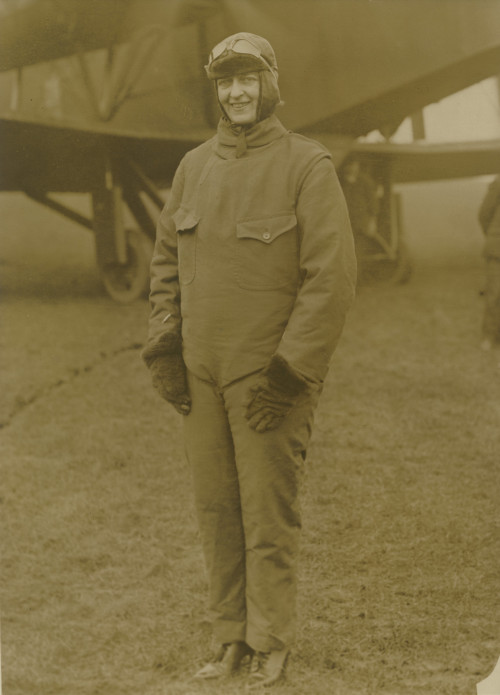
Social historians can find a wealth of information within our four walls. For example, we have three interesting collections from women who were captivated by flight during the interwar period, with the collections of The Flying Countess, Cathleen Countess or Drogheda, and two pioneering women who tried to fly across Africa, Delphine Reynolds , who reached as far as Sierra Leone in early 1931, and Peggy Salaman who reached Cape Town later that year. The collection of Wilfred Parke gives an insight into the pre-World War I world of air racing.
Flying has always captured the imagination and has been recorded in prints, posters, photographs and paintings. We care for over 100,000 Images showing early balloon lithographs from the eighteenth century, the stylish design that accompanied air travel in the 1930s, glass slides explaining scientific concepts, plus tens of thousands of images showing aeroplanes. Many of these images are available via the Mary Evan Picture Library’s corporate licencing and merchandise sites.
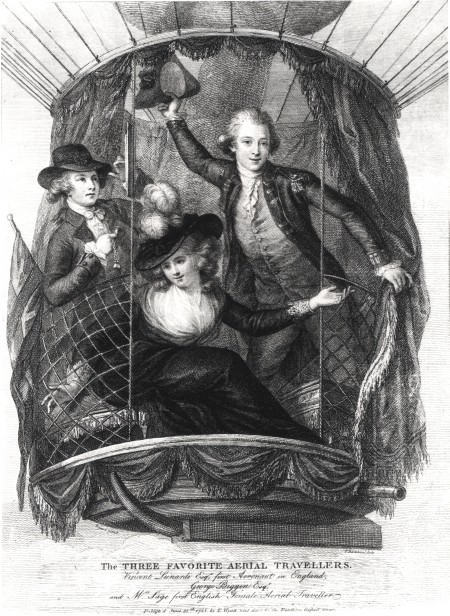
Aeronautics is also a business and our collections cover how the world of science, government, warfare and business collide. This is best shown through the records of Britain’s aviation trade organisation – the Society of British Aircraft Constructors , also known as the SBAC. Starting during the First World War, these minute books chronicle seventy years of thinking of those high up in industry. We also have the wartime records of the British and Colonial Aeroplane Company with its digitised minute book appearing on our Heritage website and the Broke-Smith Archive contains some interesting material on military aviation before the First World War.
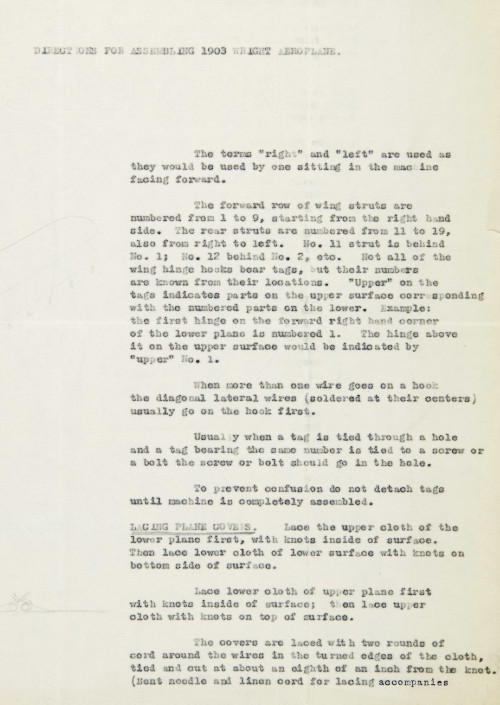
The Royal Aeronautical Society was created decades before the Wright Brothers became the first men to fly a powered aircraft, and archive of the Royal Aeronautical Society is strong on how the great minds of the time worked out how to design the machines that enabled us to fly. One of our main treasures are the scientific papers of Sir George Cayley, the man dubbed the father of aeronautics, who established many of the principles flight, such as establishing that gaining lift should be separated from the propulsion system, as well as discoveries well away from aeronautics, such as designing prosthetics and geared bicycles. Other early collections include the Baden-Powell ballooning cuttings collection, Percy Pilcher’s work on gliders and Lawrence Hargrave’s photograph albums. We have digitised the Cayley Notebooks, Pilcher Drawings and Hargrave albums and they can all be viewed on our heritage website.
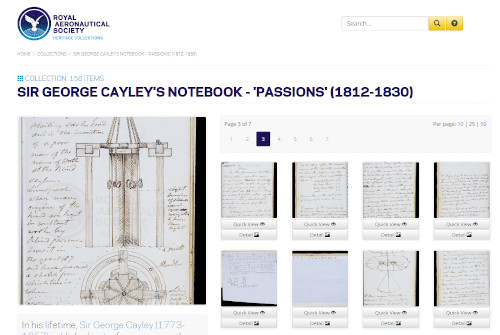
We also have an extensive letters collection, which includes correspondence from the Society and its leading members. The collections are especially strong in the early days of flight, with letters from the pioneers of flight, such as the Wright Brothers, Samuel Cody, Samuel Langley, Octave Chanute, Lawrence Hargrave, J.W. Dunne, A.V Roe, Lord Rayleigh, Sir Frederick Handley Page, Alberto Santos-Dumont, Gustav Lilienthal, F.W. Lanchester, James Glaisher and Sir Geoffrey de Havilland. Though we have not yet listed each letter on Archives Hub, a list of files can be found on the online and we can then use our paper indexes to find out more about each item of correspondence. Interaction with the great names in aeronautics politics and the services between 1910 and 1953 can be found in the correspondence files of the acid-tonged editor of Aeroplane magazine, C. G. Grey.
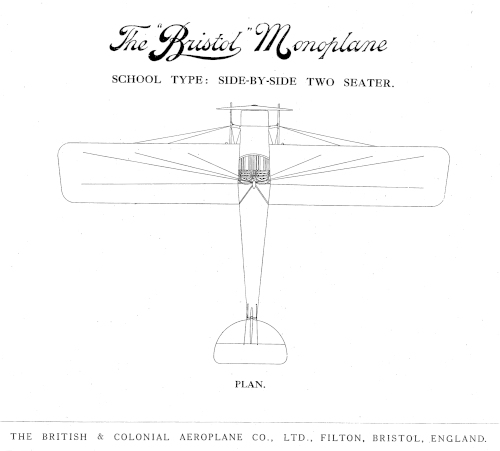
Our aero engineering archive collections move from the pioneering days into the aircraft designers and producers. The British & Colonial Aeroplane Company Collection includes design work for many post-war Bristol Aircraft, Second World War propeller developments can be found in the collection of de Havilland’s A. V. Cleaver, W. O. Manning’s work at English Electric and aeronautical papers of George William Saynor show design work at Blackburn Aircraft and Canadian Vickers, together with the designs of he and his partner, which came together in the Saynor & Bell Canadian Cub & Canadian Cub II.
Last but not least, the NAL holds the records of our parent organisation, the Royal Aeronautical Society. As well as membership records of the great and the good of the industry and day-by-day administration of a learned society, it also contains audio recordings of over four hundred of its lectures and conferences, primarily from the 1960s and 1990s onwards. The NAL has digitised most of the collection and has been slowly podcasting some of the gems over the last two or three years, including from the great names in British aero industry, such as Sir Frederick Handley Page describing the launch of Britain’s first big aircraft, Sir Geoffrey de Havilland talking about the his first few years in aeronautics, military topics such as the history of the nuclear delivery aircraft, the V-bombers, and scientific lectures such as the first 50 years of aeroelasticity.
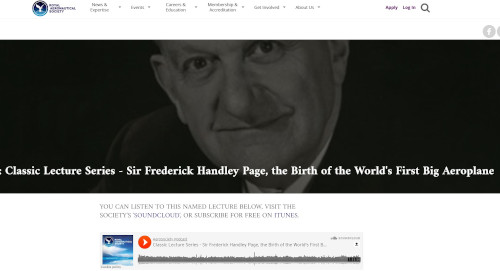
So far, the National Aerospace Library has placed high level descriptions of just over thirty of our main collections on Archives Hub. We will be now working to fill in some of the lower level information and details that is currently stored in paper index files plus or hidden away on our library catalogue, plus add details of some of our other collections to the site.
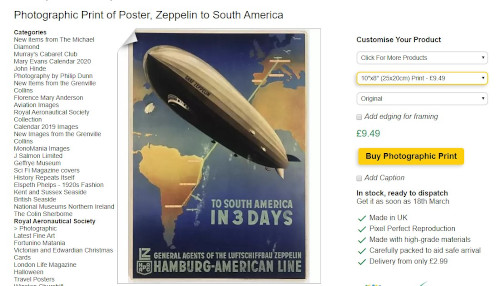
In the meantime, we always welcome enquiries, either by phone 01252 701038/60 or email. Further to the UK Government’s guidance, the National Aerospace Library is currently closed to external visitors to ensure the health and wellbeing of staff, members, and volunteers but online services remain available.
Tony Pilmer, Librarian
National Aerospace Library
Related
Browse all National Aerospace Library collection descriptions available to date on the Archives Hub
All images copyright National Aerospace Library. Reproduced with the kind permission of the copyright holders.
